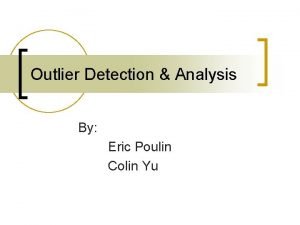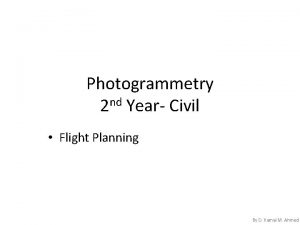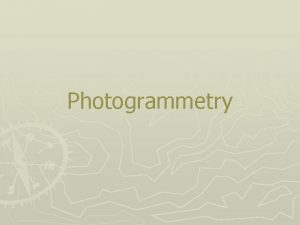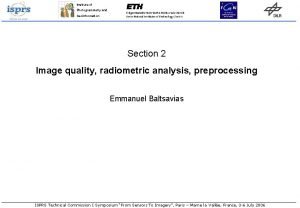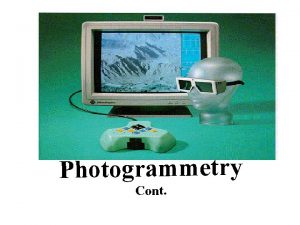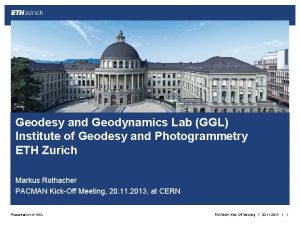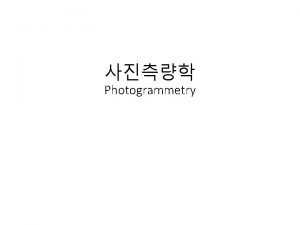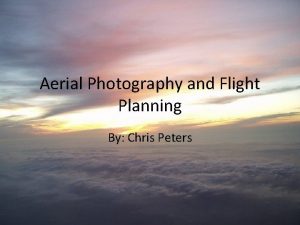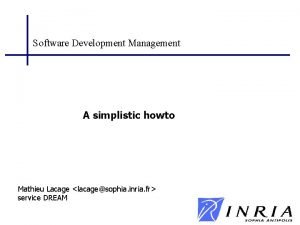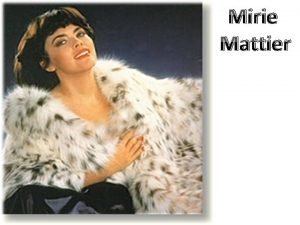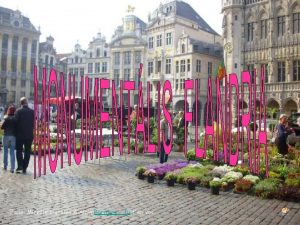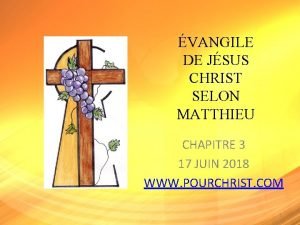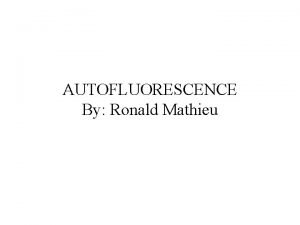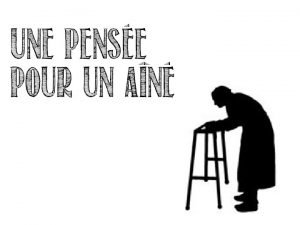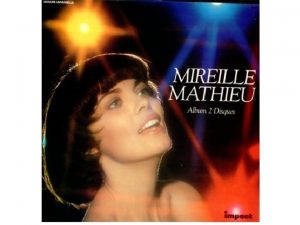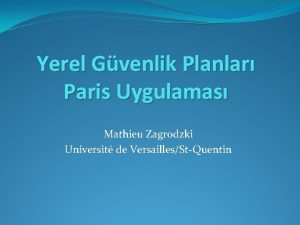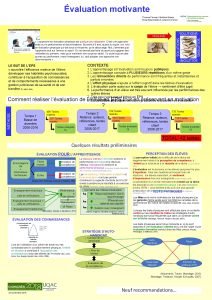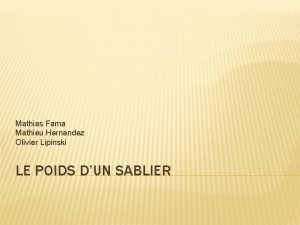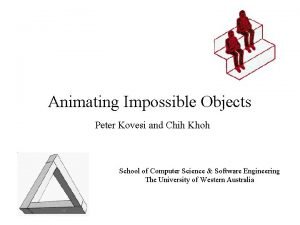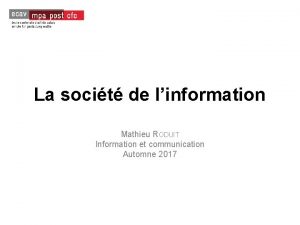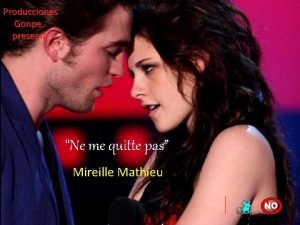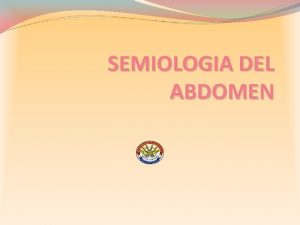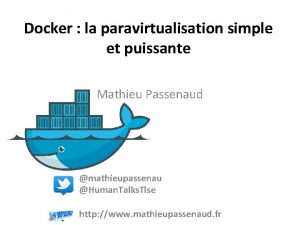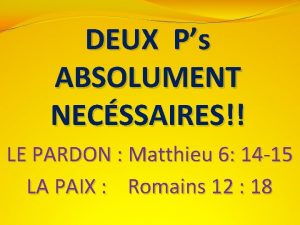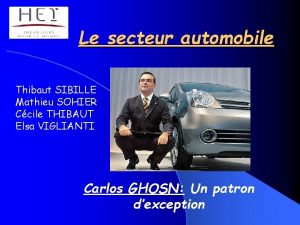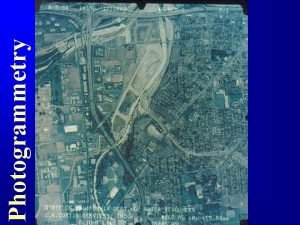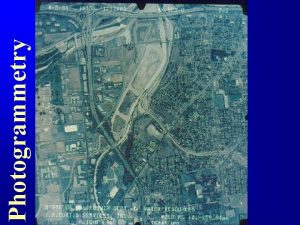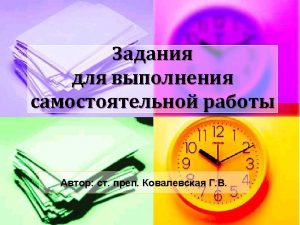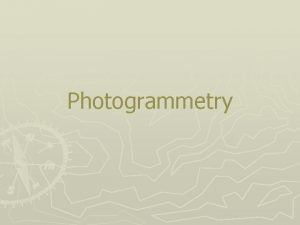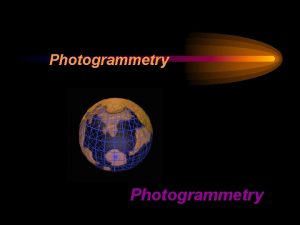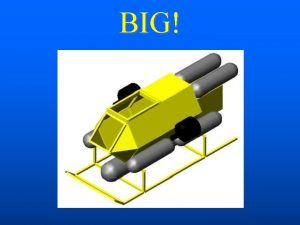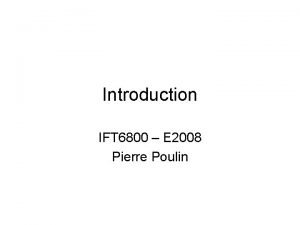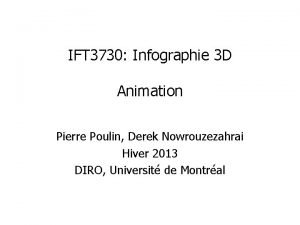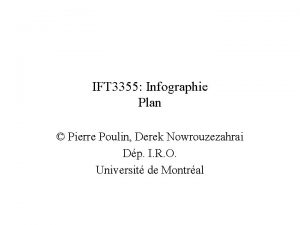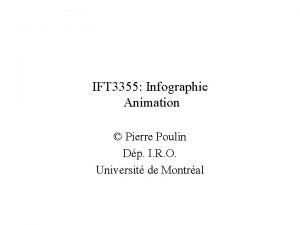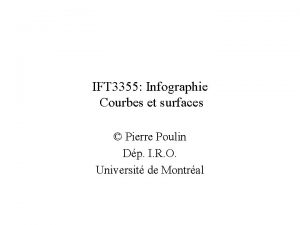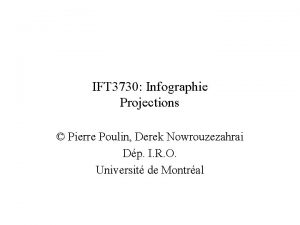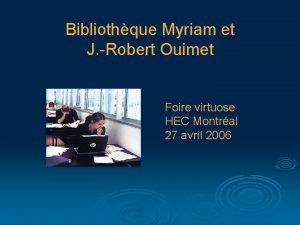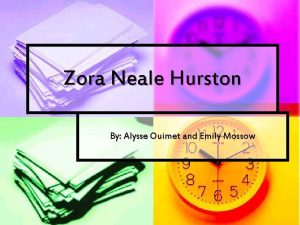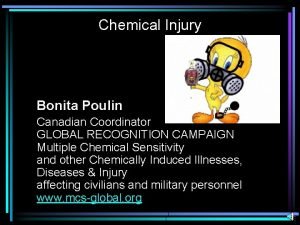Interactively Modeling with Photogrammetry Pierre Poulin Mathieu Ouimet





























- Slides: 29

Interactively Modeling with Photogrammetry Pierre Poulin Mathieu Ouimet Marie-Claude Frasson Dép. Informatique et recherche opérationnelle Université de Montréal


Motivation • Photo-realism is difficult to achieve • Important recent progress in rendering • Acquiring realistic 3 D models is still a major hurtle • Important needs for realism, special effects in movies, CAR, etc. Extracting 3 D models from photographs

Computer Vision / Robotics • 3 D models do not satisfy most of the visual accuracy necessary in graphics • Fully automatic systems are challenging : – false correspondences – missed edge detections – noise – textures • Provide much inspiration in our system

Our Interactive Reconstruction System • User knows the 3 D models / textures • User is responsible for everything • User interactions : – User draws 2 D primitives – User puts the 2 D primitives in correspondences – User adds 3 D constraints – User extracts a unified texture

Drawing 2 D Primitives

Correspondences

3 D Constraints Co-planarity Perpendicularity Parallelism

Extracted Textures

Reconstruction Process • • • Incremental Robust Intuitive Provides good graphics models Labor-intensive

The Camera • Our camera is a transformation matrix • No explicit need for real camera parameters

Reconstructing a Camera • 6 or more 2 D-to-3 D point correspondences (0, 1, 0) (1, 1, 0) (0, 1, 1) (1, 0, 0) (0, 0, 1) (1, 0, 1)

Reconstructing a Camera • Least-squares to compute all Ti • Solution with SVD – Fast – Robust – Always provides a solution – Conditions for accuracy similar to non-linear

Reconstructing a 3 D Point • Incidence of 3 D point on planes • Least-squares to compute each (x, y, z) • Polygons as set of 3 D points

Reconstructing a 3 D Line • Plücker coordinates of a 3 D line

Additional 3 D Constraints • Co-planarity • Parallelism • Perpendicularity Weights • Weights can be used to alter the importance of certain constraints

Iterating • Better cameras give better 3 D geometry • Better 3 D geometry give better cameras • Iterations between the two improve both

Convergence

Recovering Texel Colors t v v u Texture map u t s 3 D Polygon 2 D Images s

Occlusion Testing 3 D Model 2 D Image Zones of Occlusion

Linear Fit • Misalignments due to imprecisions in the 3 D model and its cameras • 2 D transformation matrix using least-squares

Unifying Texel Criteria • Clustering to discriminate view-dependent colors for a texel • Other metrics used to weight valid texels : – Projected area (adaptive sampling) – Texture quality


Two Scenes with Cubes

Desktop

Lego Tower

Coffee Pot

Conclusions • User knows best • Satisfying 3 D models and extracted textures • Labor-intensive

Future Work • Better user interface • Error detection • Radiances, reflectances, and global illumination • Displacement maps on 3 D primitives • Bounds on reconstructed information
 Dave poulin db
Dave poulin db Flight planning in photogrammetry
Flight planning in photogrammetry Definition of photogrammetry
Definition of photogrammetry Photogrammetry
Photogrammetry Parallactic angle in photogrammetry
Parallactic angle in photogrammetry Institute of geodesy and photogrammetry
Institute of geodesy and photogrammetry Principal point photogrammetry
Principal point photogrammetry Flight planning for aerial photography
Flight planning for aerial photography Role modeling theory
Role modeling theory Dimensional modeling vs relational modeling
Dimensional modeling vs relational modeling Pierre alzingre
Pierre alzingre Mathieu lacage
Mathieu lacage Mireille keller
Mireille keller Tu ten vas
Tu ten vas Mathieu chapitre 3
Mathieu chapitre 3 Ronald mathieu
Ronald mathieu Charlotte mathieu esa
Charlotte mathieu esa Mathieu brodeur enseignant
Mathieu brodeur enseignant Mireille mathieu origine
Mireille mathieu origine Mathieu zagrodzki
Mathieu zagrodzki Thomas favreau
Thomas favreau Mathieu hernandez
Mathieu hernandez Mathieu hamaekers
Mathieu hamaekers Mathieu roduit
Mathieu roduit La guillotine permanente
La guillotine permanente Yo inventare un pais donde el amor sera ley
Yo inventare un pais donde el amor sera ley Maniobras del abdomen
Maniobras del abdomen Mathieu passenaud
Mathieu passenaud Mathieu 6:14
Mathieu 6:14 Dr. thomas jentges suicide
Dr. thomas jentges suicide
